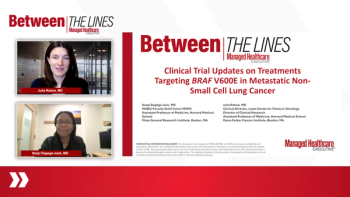Patient Considerations in Hemophilia A: Choosing Therapy, Navigating Lifestyle Changes, and Access to Care
Patients with hemophilia A face challenges with finding a lifestyle-appropriate therapy that considers self-infusion skills, management of breakthrough bleeds, and access to bleeding disorder centers.
Jonathan Roberts, M.D.: HIV, regarding the hemophilia A population, thankfully now, since the very early ‘90s, even in the plasma-derived products there have been no cases of transmission of a viral infection, HIV, hepatitis B or C. So, the products we have on the market today are safe. That's first. Historically, what we have is from that era, those that survived now have well-controlled HIV for the most part. We work with infectious disease specialists and hepatologists. It takes a multidisciplinary team. Again, as I mentioned before, the importance of having comprehensive care centers like ours is because we work with all of these specialists within our center. Patients will need to have their standard HIV treatment of care. They need to have all of their monitoring as anyone without a bleeding disorder would. In addition to that they need their bleeding disorder managed by their coagulation hematologist who will direct what therapy is needed. The good thing is that for generations that are up and coming, HIV is not something that we see in this population. So really, it's for the foreseeable next 40 years or so that probably people with HIV and hemophilia will be out there and need all this additional expertise.
What challenges do patients with hemophilia A face with treatment? I can share that I have severe hemophilia so I can also speak to this from a personal standpoint as well. I think in the evolving landscape, trying to choose which therapy fits your lifestyle best can be the most challenging thing. I think, in my generation and those before me who were used to plasma-derived [products] or the early-generation recombinant factor products incorporating some routine every other day or three times per week infusions is part of your lifestyle, and if I have a patient that is doing well on that regimen without breakthrough bleeds, there's really nothing from a clinical standpoint that's pushing me to make them change from that regimen. Now, if something happens in their life, like a big surgery or let's say they do a new workout routine or something like that, they are experiencing more of a treatment burden because they need more infusions. Then we start talking about maybe one of the newer extended half-life products that's available may be good for them or maybe one of the nonfactor therapy options. I've had some patients that even later on in life, they're tired of doing their intravenous infusions, even though they're experts at it. They want to make a switch to one of the nonfactor therapies, and that's perfectly fine as long as they're not having any breakthrough bleeds. One thing that I feel very passionate about, though, is that every individual who has hemophilia needs to learn how to self-infuse for an emergent breakthrough bleed. Because I can tell you from personal experience, being able to not be in the hospital, not be in emergency departments, being able to be on the go, go hiking in the mountains, go on vacation, go travel internationally and being able to administer your therapy yourself or being prepared if there's an emergent scenario and you need to treat yourself, that by far helps you to live a life that is much more free from the treatment burden of hemophilia. I train my patients from a very early age. I challenge kids to learn self-infusion as early as possible so they're not reliant on mom and dad so they can do it themselves. We send kids to hemophilia camp. They work with nurses and staff there. They learn that they're not alone and that there are other people who experience this disorder that can learn to be their own experts and take care of their hemophilia themselves. So those are some of the patient challenges.
There's a network of bleeding disorder centers across the country and some are geographically further away than others from where patients are. So our center does outreach clinics all across the state of Illinois to the far northern tip and the far southern tip, so we go to the patients and that we are making sure that we are providing that access to care if they have a need and for their regular comprehensive clinic appointments. So, having that access for the patients is very important and really, again, speaks to why having these treatment models is very important for patients.
Transcript edited for clarity.
Newsletter
Get the latest industry news, event updates, and more from Managed healthcare Executive.





















































